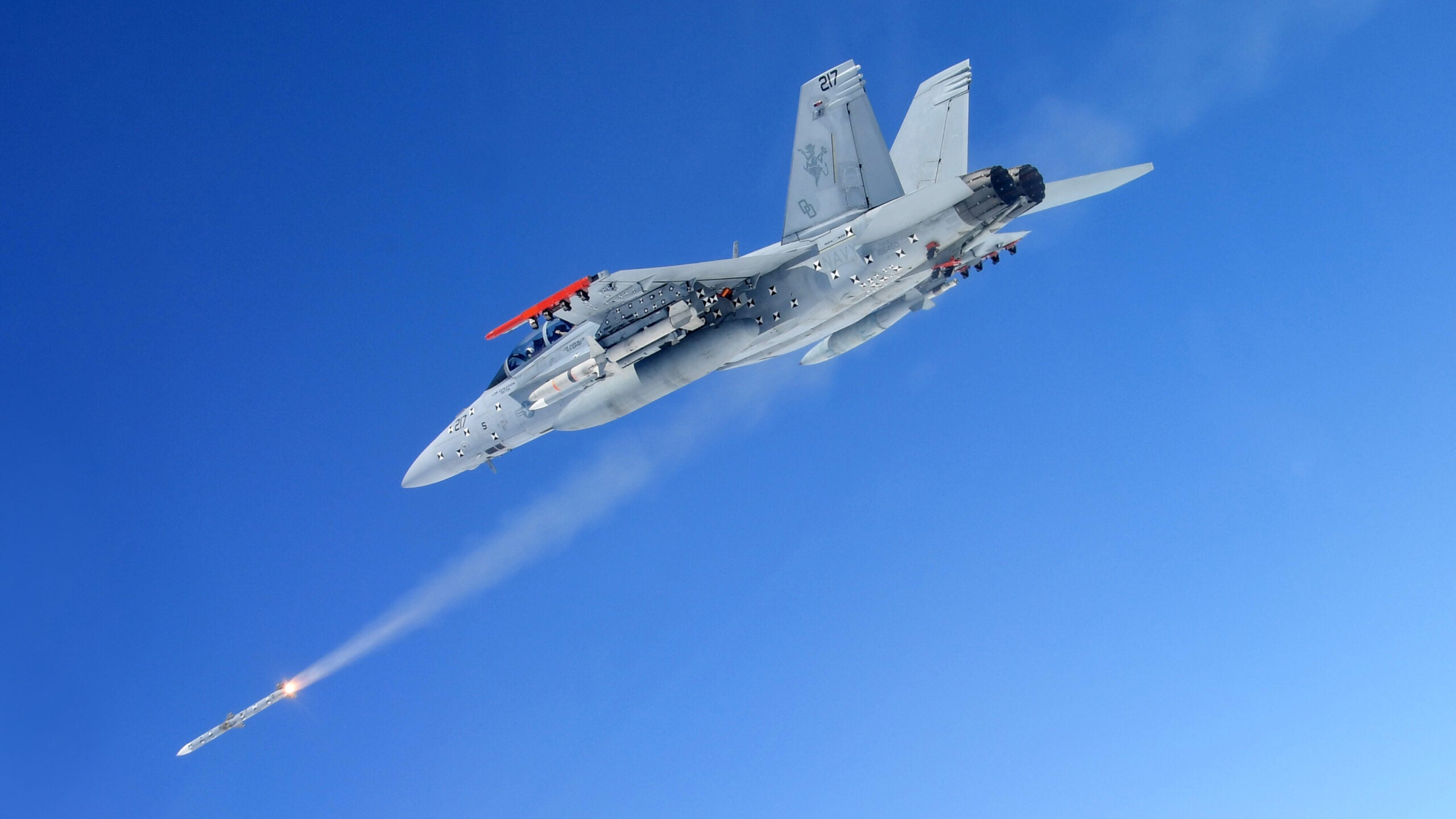The venerable AIM-120 Advanced Medium-Range Air-to-Air Missile, or AMRAAM, which got its first kill back in 1992, is set to get another major boost in capability. Although the U.S. military has a designated successor now in the works, the West’s most popular radar-guided air-to-air missile is about to be fielded in a new iteration, known as F3R. AMRAAMs in this configuration will have an updated guidance section and are optimized for the kind of high-end aerial combat that would ensue if the United States and its allies were ever to go to war with China, according to the missile’s manufacturer Raytheon.
Raytheon Missiles & Defense announced officially today that it had completed a series of captive carry flight tests of its latest AMRAAM upgrade, which has been developed under the F3R program, which stands for Form, Fit, Function Refresh. During captive carry testing, the missiles remain attached to a test aircraft throughout the duration of the flight. Such trials are vital for gathering data about how a particular design, as well as the aircraft carrying it, handles the basic stresses of being carried aloft and taken through various maneuvers. The manufacturer describes the captive flights as the “most stressing test to date” for the F3R and the related System Improvement Program, or SIP 3F, software update.
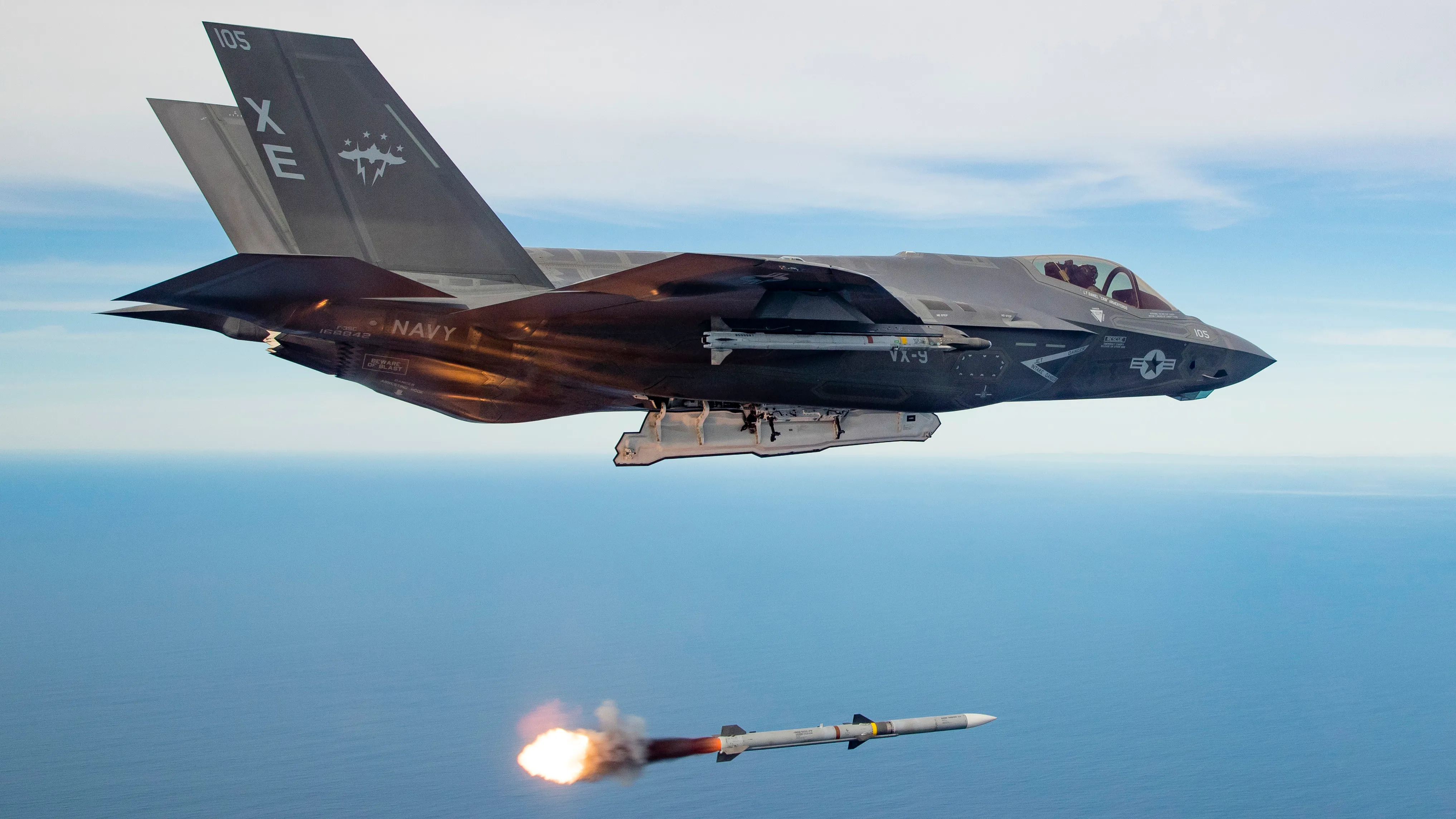
The tests were conducted by Raytheon together with the Department of Defense at Eglin Air Force Base, Florida, home to the Gulf Range Complex with over 130,000 square miles of training airspace, suitable for live missile shots, including against target drones. You can read more here about how the Air Force uses live missiles to assess how they would function in combat situations.
The tests saw instrumented captive versions of the F3R missile carried during “multiple” F-15, F-16, and F/A-18 air-to-air intercept missions to prove the weapon works as expected in a realistic environment. Prior to this latest round of trials, there had multiple other captive carry missions as well as two separation launches from a U.S. Navy F/A-18F Super Hornet. A photo from one of those tests appears at the top of this article.
“In addition to allowing for continued AMRAAM production, the F3R program with SIP 3F will deliver significantly enhanced capabilities, enabling the missile to address the rapidly evolving threats we are seeing from our adversaries today,” said Paul Ferraro, vice president of Air Power at Raytheon Missiles & Defense in a statement. “These captive carry flights are essential for assessing the software upgrades’ performance while verifying the missile meets all its aircraft communication interface requirements.”
The F3R program has been developed for the existing AIM-120C-8 and AIM-120D-3 AMRAAMs, which already represent the ‘top of the line’ for these missiles. Of these, the D-model already offers some significant advantages, including a two-way datalink with third-party targeting capabilities. It was an AIM-120D that was used for what the Air Force described as the “longest known” air-to-air missile shot during the “long shot” test earlier this year.

Under F3R, Raytheon engineers have used model-based systems engineering initiatives and other digital technologies to upgrade “multiple” circuit cards and hardware into the guidance section of the missiles, replacing the older software. In the past, the Pentagon’s Selected Acquisition Report, or SAR, for AMRAAM described F3R as an update to “mitigate obsolescence issues in the AMRAAM guidance section.”
The result is planned not only to boost AMRAAM’s overall capabilities, but ensure it can remain viable while production continues into the next decade for the U.S. military and for export customers, around 40 of which have already ordered different AIM-120 versions, including for ground-based applications.
So, what do F3R and SIP 3F specifically add to AMRAAM in terms of improved capabilities? The War Zone asked Raytheon for more details, and they explained:
“The new F3R hardware — including circuit cards and guidance section components — allows for significantly enhanced processing power, which SIP-3F leverages for its advanced algorithms. When combined, the hardware and software enhance the missile’s overall effectiveness.”
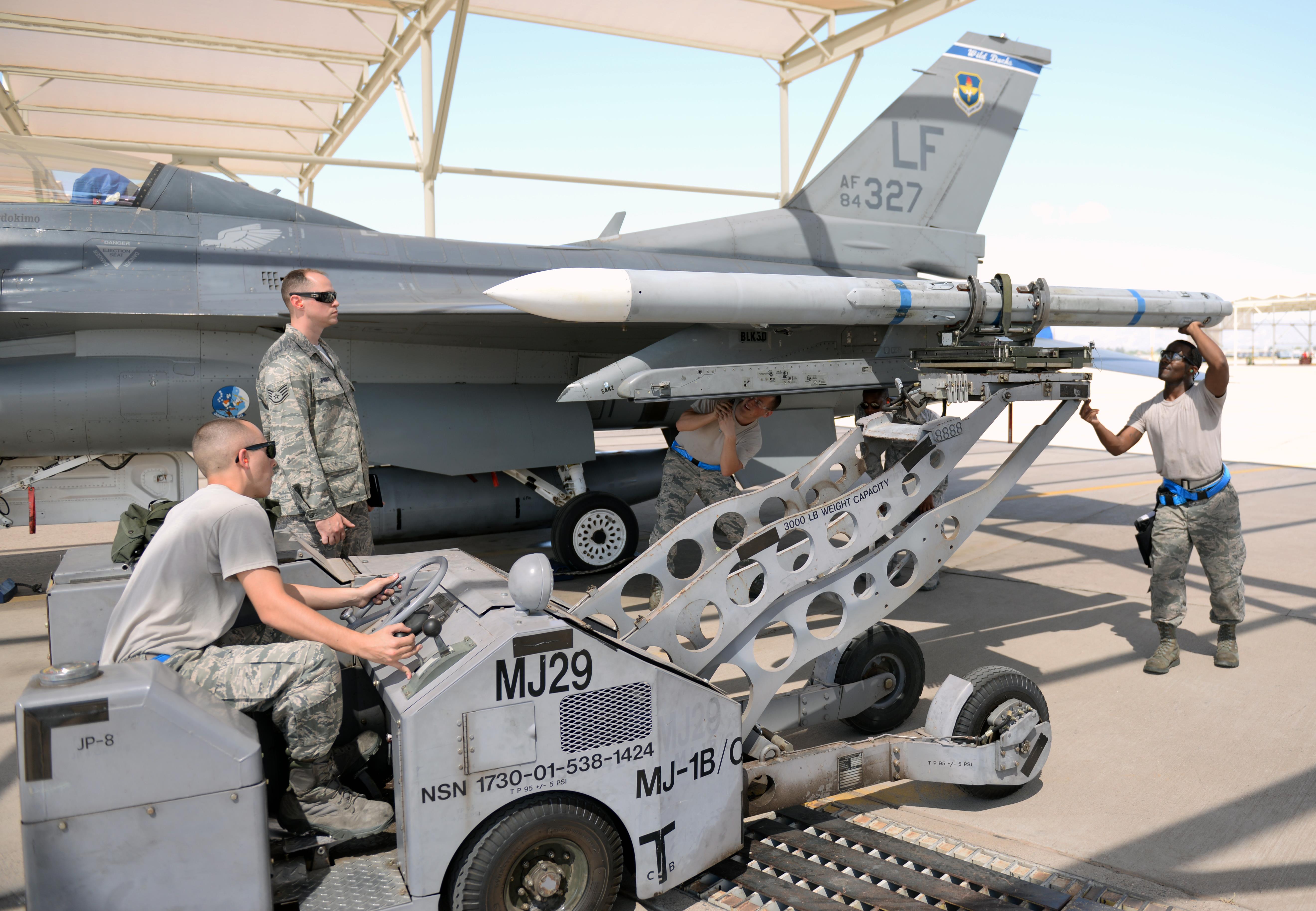
While the F3R version of the missile is not directly linked to the long shot test, which was designed to assess the limits of AMRAAM’s range and performance envelope, Raytheon says that that the trial is indicative of the weapon’s continued advancement. “As F3R and SIP 3F software enter service with the warfighters, the combination of expanded range and improved guidance section performance will give users a big boost in overall capability against long-range threats,” the company told us.
As for the “rapidly evolving threats” mentioned by Raytheon’s Paul Ferraro, the company says that these include advanced fighters, cruise missiles, and bombers. They also directed us to the recent quote from the Secretary of the Air Force Frank Kendall: “If it doesn’t threaten China, why are we doing it?” Clearly, ongoing improvements to the AIM-120 are being driven by the fast-developing military capabilities being fielded by China’s People’s Liberation Army, or PLA.
In particular, the company pointed to the enhanced seeker performance that the F3R provides to the AIM-120D-3, which is now better able to target enemy aircraft and missiles in adverse weather, even when threats are employing advanced electronic warfare systems. This is another area where China has made significant strides in recent years, including the development of its J-16D version of the Flanker fighter jet, which is expected to provide longer-range electronic warfare support to tactical aircraft.
A recent promotional video from Raytheon includes footage of a separation launch of the latest-generation AMRAAM F3R from a Navy F/A-18F Super Hornet:

The push to further enhance this proven air-to-air missile is also an indication that the AIM-120 will be around for many years to come, despite the aim to have the new Lockheed Martin AIM-260 Joint Advanced Tactical Missile, or JATM, start arming Air Force and Navy aircraft as early as next year. Test work for the JATM program is already well advanced, and the missile is expected to have a greater range than the AIM-120 and performance that at least matches Chinese and Russian efforts in the field of very long-range air-to-air missiles.
As well as JATM, there are other long-range air-to-air missile programs in the works, including Raytheon’s own Long Range Engagement Weapon (LREW), about which precious little information is available in the public domain. Then there is Boeing’s recently unveiled concept for a two-stage weapon, the Long-Range Air-to-Air Missile, or LRAAM, which you can read about here.
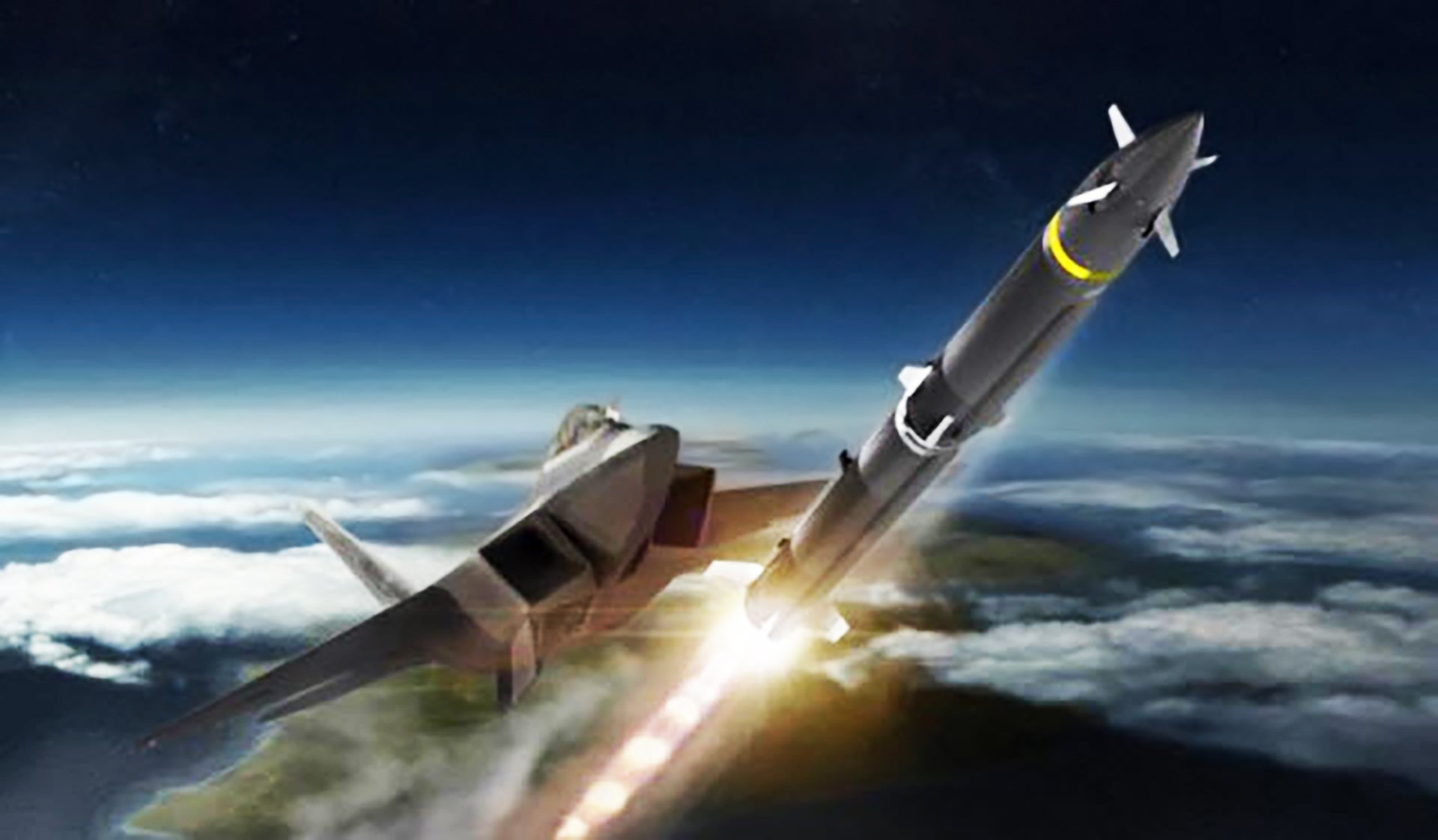
Even if the AIM-260 meets its ambitious timeline and starts to be fielded next year, it will be some time before it’s declared fully operational after which production will gather pace. Furthermore, once it appears, JATM may well also not be available for export, at least initially. Having improved AIM-120s will be important both from a capacity standpoint and as a more readily exportable option.
Either way, that doesn’t leave an awful lot of time if the most pessimistic predictions of some U.S. military leaders come true. Earlier this year, Admiral Philip Davidson, at the time the commander of United States Indo-Pacific Command (USINDOPACOM), warned that China could invade Taiwan within the next six years.
Were that to happen, and the United States become involved in a military confrontation with China, then its aircraft — and those of Taiwan — would need every advantage they can get to counter aircraft of the PLA that are increasingly considered able to outrange American fighter jets with their own advanced air-to-air missiles.
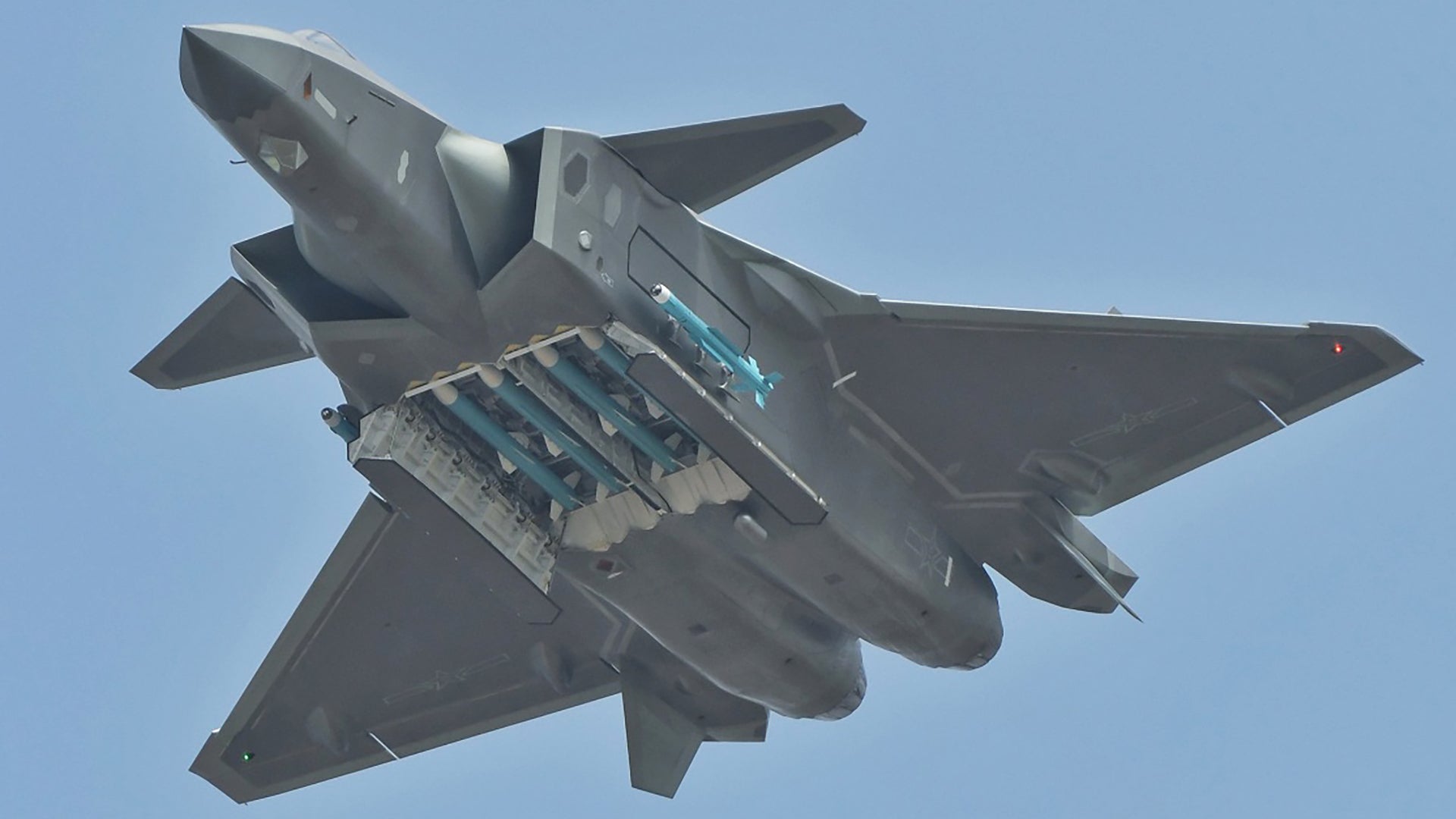
As for the revamped AMRAAM, the data gathered during the latest captive flight tests will inform the final software build, which began extensive qualification testing in November. Next year should see “several” guided live-fire test events.
The plan is then to incorporate F3R and SIP 3F into U.S. military AIM-120D-3 missiles, with the production of All-Up Rounds, or AURs, as opposed to Captive Air Training Missiles (CATMs), to commence in the second quarter of 2022. Deliveries will follow from early 2023, as part of the Lot 33 production run. The U.S. AMRAAM program of record is expected to continue into around 2027 or 2028. At the same time, the improvements will be added to AIM-120C-8 missiles that are being produced for international partners and which are expected to remain in production long beyond 2030.
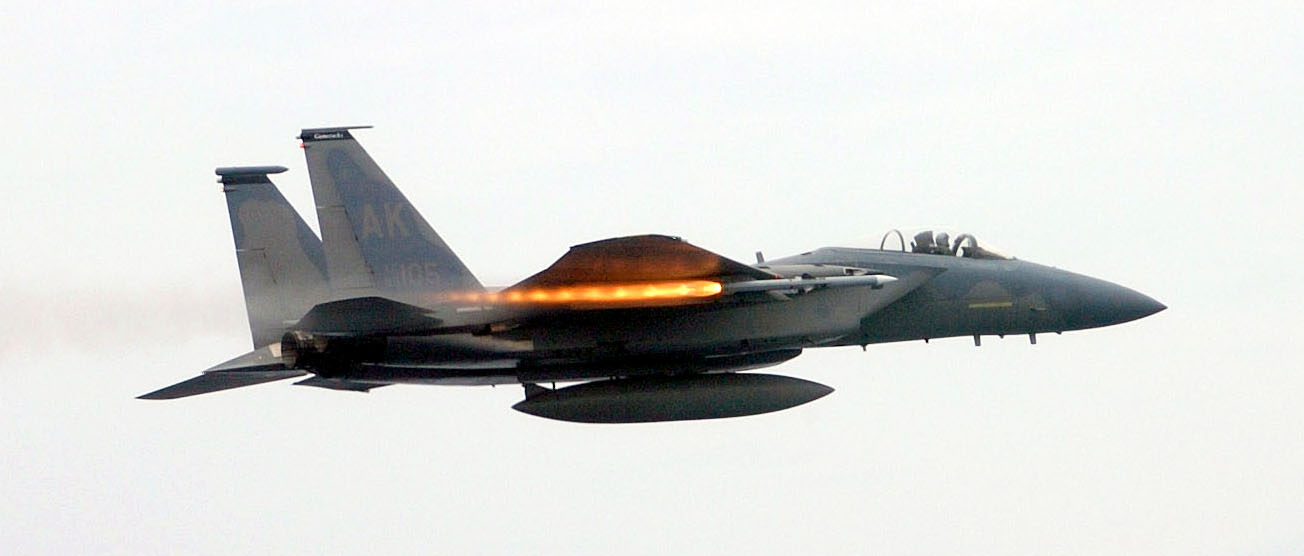
After many years of apparently stalled progress, in which other countries have made notable progress in long-range air-to-air missiles, the United States now seems to be engaged in a flurry of activity in this area. While the AIM-260 and other potentially more exotic weapons should represent a significant leap over missiles currently in use, the urgency of the situation means that work is also continuing to ensure the tried and tested AMRAAM remains at the top of its game.
Contact the author: thomas@thedrive.com
